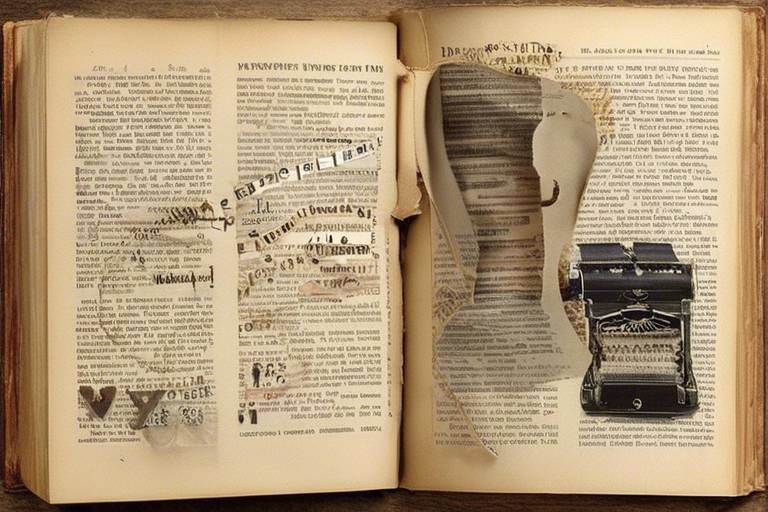Design a Fashion Line from Upcycled Clothing
In today’s world, where fast fashion dominates the industry, the concept of upcycling has emerged as a refreshing breeze of creativity and sustainability. Imagine turning old, discarded clothing into trendy, unique pieces that not only look fabulous but also tell a story. This article explores the creative process of designing a fashion line using upcycled materials, highlighting sustainability, innovative techniques, and the impact on the fashion industry.
Upcycling is more than just a buzzword; it's a movement that transforms discarded materials into new products, significantly reducing waste and promoting sustainability. Think of it as giving a second life to what would otherwise end up in a landfill. In the fashion industry, where the environmental impact is staggering, upcycling offers a powerful solution. It encourages designers to rethink their approach to materials and production, embracing creativity while being kind to our planet. By understanding the principles of upcycling, designers can contribute to a more sustainable future, making fashion not only beautiful but also responsible.
Choosing the right materials is crucial for a successful upcycled fashion line. The beauty of upcycling lies in its versatility; you can source fabrics from various places, each with its unique charm. From vintage garments to unused fabric scraps, the potential is endless. When selecting materials, consider not only their aesthetic appeal but also their durability and sustainability. Here are some effective ways to source and select various fabrics and items for your designs:
Thrift stores are treasure troves for upcycled materials. They often house a wide variety of clothing items that can be transformed into something fresh and stylish. When visiting these shops, keep an open mind and look for unique pieces that catch your eye. Here are some tips for effectively sourcing unique fabrics and garments from local shops:
- Visit frequently to discover new arrivals.
- Look for items with interesting patterns or textures.
- Don't shy away from items that need a little TLC; they can often be transformed into stunning designs.
Online platforms have revolutionized the way we shop for materials, providing access to a wider range of fabrics and clothing. Websites like Etsy, eBay, or specialized upcycling sites can be goldmines for finding unique items. To make the most of these resources, consider the following best practices for finding upcycled clothing and fabrics online:
- Use specific keywords related to upcycling to narrow down your search.
- Check seller ratings and reviews to ensure quality.
- Don’t hesitate to reach out to sellers for more information about the materials.
Engaging with the community for donations can yield unique materials that might not be available elsewhere. Building partnerships with local organizations or schools can open doors to a variety of fabrics and clothing items. Here are some strategies for reaching out:
- Host a clothing drive to encourage donations.
- Collaborate with local artists or schools for creative projects.
- Promote your upcycling mission to attract community support.
Once you have sourced your materials, the next step is to unleash your creativity through innovative design techniques. Upcycling requires thinking outside the box and finding new ways to use old materials. Techniques such as patchwork, layering, and even dyeing can breathe new life into discarded items. Experimenting with different combinations can lead to unexpected and delightful results, allowing you to create fashionable pieces that stand out in the market.
Effective marketing strategies can help promote your upcycled fashion line. In a world filled with options, it's essential to carve out a niche for your brand. Start by identifying your target audience and tailoring your message to resonate with them. Utilize storytelling to connect with customers; share the journey of your materials and the inspiration behind each piece. This personal touch can create a loyal customer base that appreciates the value of sustainable fashion.
A strong social media presence is vital for brand visibility. Platforms like Instagram and Pinterest are perfect for showcasing your designs and engaging with customers. Use high-quality images and captivating captions to tell your brand’s story. Engage with your audience by asking for their opinions, running polls, or even hosting giveaways. The more you interact, the more invested your audience will feel in your brand.
Collaborating with other brands or influencers can enhance your reach and credibility. Consider partnering with eco-friendly brands or local artisans to create limited-edition collections. This not only broadens your audience but also aligns your brand with others who share similar values. The benefits of partnerships in promoting your upcycled fashion line are immense; they can lead to new ideas, increased visibility, and a stronger community.
Q: What is upcycling?
A: Upcycling is the process of transforming discarded materials into new products, thereby reducing waste and promoting sustainability.
Q: Where can I find materials for upcycling?
A: You can source materials from local thrift stores, online marketplaces, and community donations.
Q: How can I market my upcycled fashion line?
A: Utilize social media, engage with your audience, and consider collaborations with other brands or influencers to enhance your visibility.
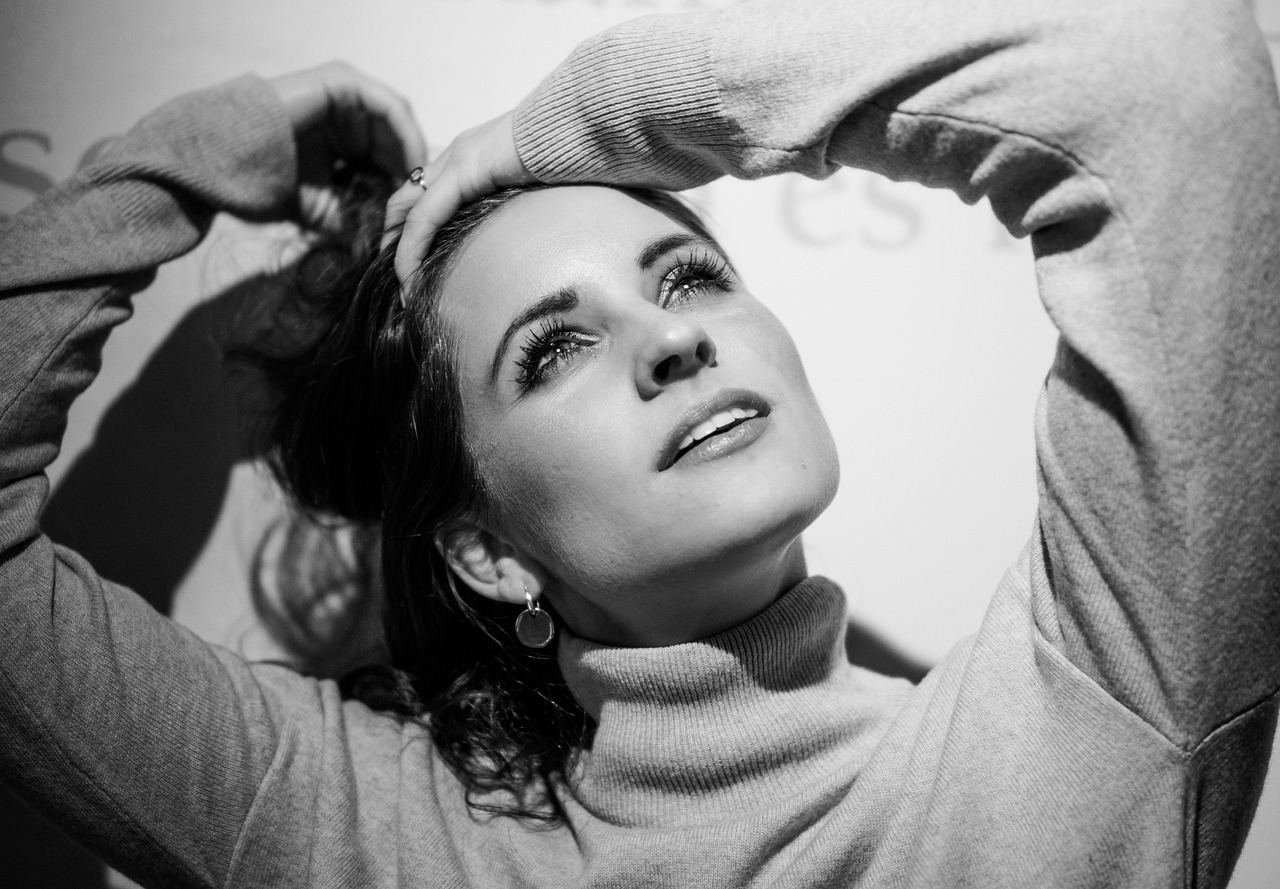
Understanding Upcycling
Upcycling is more than just a trendy buzzword; it's a transformative approach that breathes new life into discarded materials, turning them into something beautiful and functional. Imagine taking a worn-out pair of jeans and transforming them into a stylish tote bag or a vintage dress that has seen better days, now reimagined as a chic skirt. This creative process not only reduces waste but also promotes sustainability in a world that desperately needs it.
At its core, upcycling embodies the principles of sustainability, creativity, and resourcefulness. By reusing materials that would otherwise end up in landfills, upcycling helps to decrease the demand for new resources, which can be incredibly taxing on our planet. It encourages us to think outside the box and see potential where others see trash. In the fashion industry, this shift is crucial as it challenges the fast fashion model that prioritizes profit over environmental impact.
The significance of upcycling in fashion extends beyond just aesthetics; it fosters a deeper connection between consumers and the products they wear. When you don a piece of upcycled clothing, you're not just making a fashion statement; you're making a statement about your values. You're saying, "I care about the environment, and I choose to support sustainable practices." This mindset can create a ripple effect, inspiring others to consider their consumption habits and the impact of their purchases.
Moreover, upcycling opens the door to **innovation**. Designers are challenged to think creatively about how to use existing materials, which can lead to unique and one-of-a-kind pieces that stand out in a sea of mass-produced clothing. The beauty of upcycling lies in its unpredictability; every piece tells a story, and every design is a reflection of the materials used. This not only adds character to the clothing but also allows for endless possibilities in terms of style and function.
In conclusion, understanding upcycling is essential for anyone looking to make a mark in the fashion industry today. It’s a movement that not only champions sustainability but also encourages creativity and innovation. By embracing upcycled materials, designers can create stunning fashion lines that resonate with eco-conscious consumers, paving the way for a more sustainable future in fashion.

Identifying Materials
Choosing the right materials is crucial for a successful upcycled fashion line. The beauty of upcycling lies in its ability to breathe new life into discarded items, transforming them into something fresh and exciting. But how do you identify the right materials that not only align with your design vision but also resonate with the values of sustainability? It’s like being a treasure hunter, sifting through the remnants of the past to find gems that can be polished into stunning pieces. When embarking on this journey, consider the following avenues for sourcing your materials.
Thrift stores are often considered the holy grail for upcycled materials. These shops are filled with unique fabrics and garments just waiting to be reimagined. The thrill of the hunt is part of the experience! When you step into a thrift store, it’s like entering a world of possibilities. Look for items that have interesting textures, colors, or patterns. You might find an old denim jacket that can be transformed into a chic bag or a vintage dress that can be restructured into a modern outfit. Here are some tips to effectively source unique fabrics and garments from local shops:
- Visit Frequently: Inventory changes regularly, so frequent visits can yield new finds.
- Check All Sections: Don’t limit yourself to the clothing racks; look in home goods for fabric remnants or unique items.
- Be Open-Minded: Sometimes, the best materials are those that require a little creativity to see their potential.
In today’s digital age, online platforms provide access to a wider range of materials than ever before. Websites like Etsy, eBay, or specialized fabric stores can be goldmines for upcycled clothing and fabrics. When shopping online, it’s essential to keep a few best practices in mind:
- Research Sellers: Look for reputable sellers with good reviews to ensure quality materials.
- Watch for Shipping Costs: Factor in shipping when budgeting for your materials to avoid surprises.
- Use Filters: Many sites allow you to filter by color, fabric type, or condition, making it easier to find exactly what you need.
Engaging with the community for donations can yield unique materials that you might not find elsewhere. This approach not only helps you gather resources but also builds relationships within your community. Consider reaching out to local organizations, schools, or even individuals who might have unwanted clothing or fabric remnants. Here are some strategies for building partnerships:
- Host a Collection Drive: Organize an event where people can donate their unwanted clothes.
- Connect with Local Artists: Collaborate with artists who may have leftover materials from their projects.
- Leverage Social Media: Use platforms like Facebook or Instagram to spread the word about your need for materials.
By identifying and sourcing the right materials through these avenues, you set the stage for creating a fashion line that not only stands out but also promotes sustainability. Remember, the materials you choose tell a story, and it’s up to you to weave them into a narrative that resonates with your audience. So, roll up your sleeves and dive into the world of upcycled fashion—there’s a treasure trove waiting just for you!
Q: What types of materials can be upcycled?
A: Almost any material can be upcycled! Common choices include clothing, denim, linens, and even accessories. Look for items that have interesting textures or patterns.
Q: How do I determine the quality of upcycled materials?
A: Inspect the items for any wear and tear. Look for stains, holes, or fraying that might compromise the final product. Quality materials will ensure your designs are durable and appealing.
Q: Can I sell my upcycled fashion line?
A: Absolutely! Many consumers are looking for sustainable fashion options. With effective marketing and a unique design approach, you can successfully sell your upcycled creations.
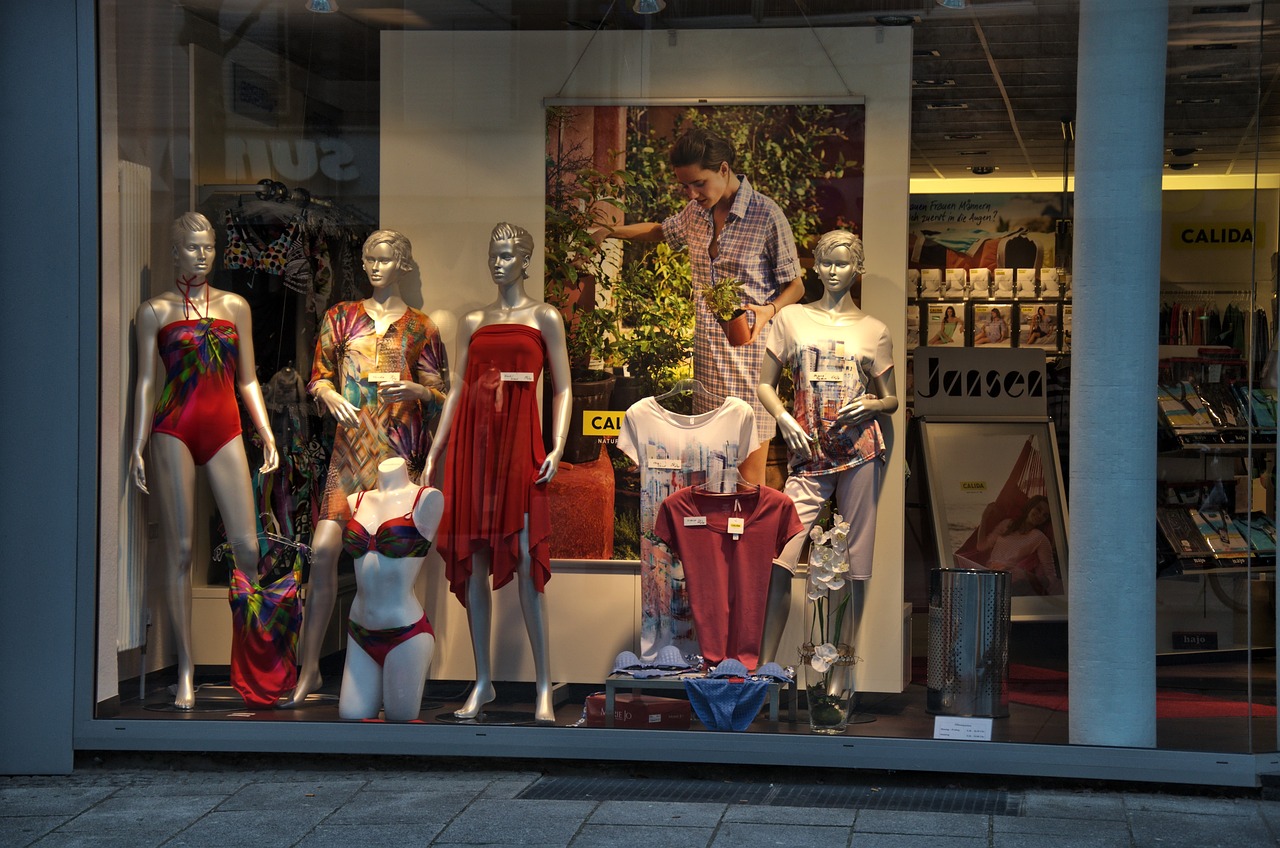
Local Thrift Stores
When it comes to sourcing materials for your upcycled fashion line, are nothing short of a goldmine. Imagine walking through aisles filled with unique fabrics, vintage garments, and accessories that have stories of their own. Each item is not just a piece of clothing; it’s a canvas waiting for your creative touch. Thrift stores offer an eclectic mix of styles and textures that can spark inspiration and drive your designs to new heights.
One of the best aspects of shopping at thrift stores is the element of surprise. You never know what you might find! From retro denim jackets to elegant silk blouses, the possibilities are endless. Here are some tips to help you effectively navigate these treasure troves:
- Visit Regularly: Inventory changes frequently, so making regular visits can yield new finds.
- Look Beyond the Surface: Sometimes, items may appear worn or outdated, but with a little creativity, they can be transformed into trendy pieces.
- Check for Quality: Inspect garments for fabric quality and structural integrity. Look for items that can withstand alterations.
Moreover, thrift stores often have affordable prices, allowing you to experiment without breaking the bank. This is especially beneficial for budding designers who are still honing their craft. You can buy several items, mix and match, and let your imagination run wild. Plus, every purchase contributes to sustainability by reducing waste and promoting a circular economy.
Another advantage of shopping at local thrift stores is the opportunity to discover unique pieces that you won’t find in mainstream fashion outlets. This exclusivity can set your designs apart in a crowded market. Imagine creating a one-of-a-kind dress from a vintage tablecloth or turning a pair of old jeans into chic shorts. The stories behind these items can enrich your brand’s narrative, making your designs not just fashionable but also meaningful.
In addition, many thrift stores are community-focused, often supporting local charities or initiatives. By shopping there, you’re not just finding materials; you’re also giving back to the community. This connection can be a powerful marketing tool, as customers increasingly seek brands that align with their values. Highlighting your sourcing practices can enhance your brand's story and appeal to a socially conscious audience.
So, the next time you’re thinking about where to source materials for your upcycled fashion line, remember that local thrift stores are more than just shops—they're a gateway to creativity, sustainability, and community engagement. Embrace the adventure of thrifting, and you might just uncover the perfect fabric or garment that inspires your next signature piece.
Q: What should I look for when shopping at thrift stores?
A: Focus on quality fabrics, unique designs, and items that can be easily altered or repurposed. Don't be afraid to think outside the box!
Q: How can I ensure the items I buy are sustainable?
A: Buying second-hand is inherently sustainable, but check for natural fibers and avoid items that may contain harmful chemicals or plastics.
Q: Can I find high-end or designer items at thrift stores?
A: Absolutely! Many thrift stores receive donations of high-end brands, so keep an eye out for hidden gems.
Q: How often should I visit thrift stores?
A: Regular visits are key, as inventory changes frequently. Aim for at least once a week to catch new arrivals.
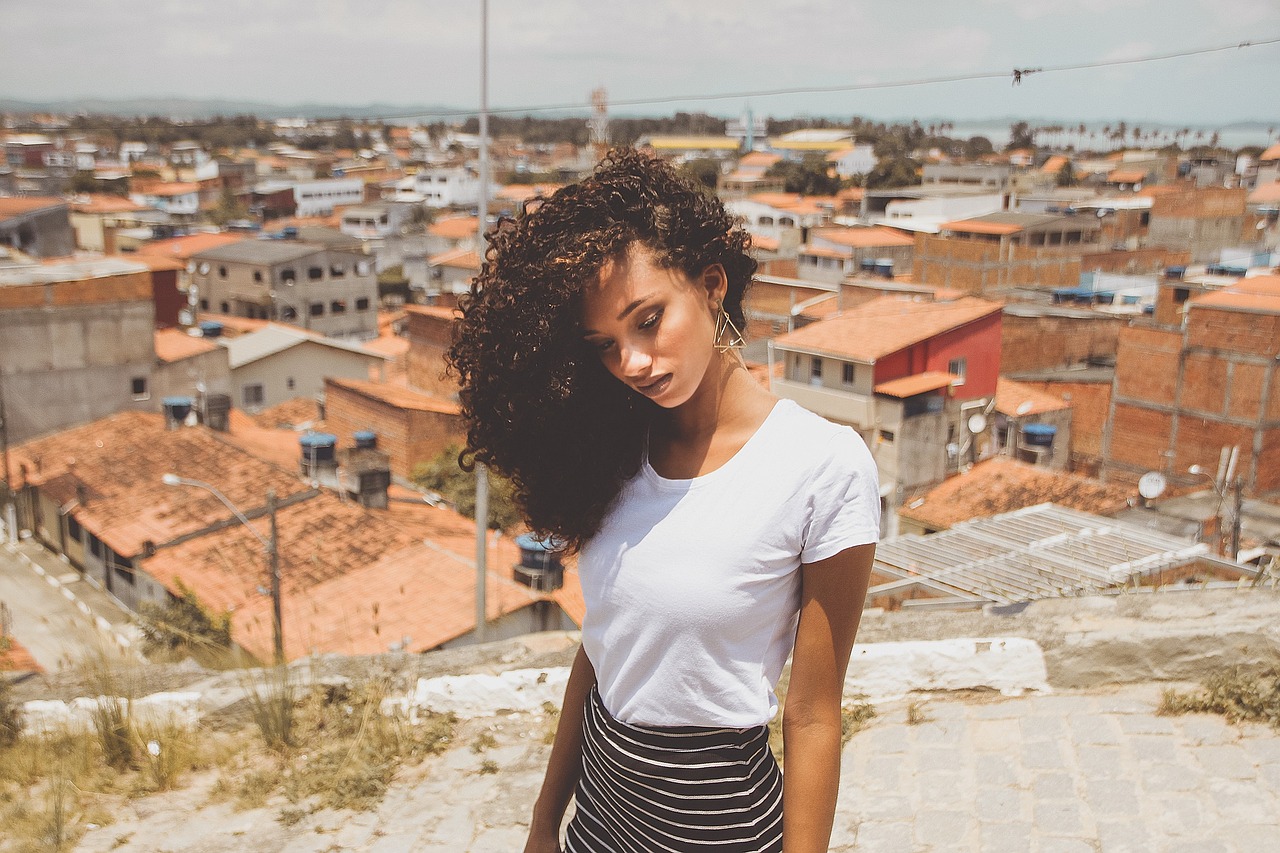
Online Marketplaces
When it comes to sourcing materials for your upcycled fashion line, online marketplaces are like a treasure chest waiting to be discovered. The digital landscape offers a plethora of options that can help you find unique fabrics and garments that might not be available in your local thrift stores. But navigating these platforms can feel overwhelming at first, especially with so many choices at your fingertips. So, how do you sift through the digital clutter to find that perfect piece? Well, let’s dive into some effective strategies!
First off, it’s essential to know which online marketplaces cater specifically to second-hand or upcycled materials. Websites like Etsy and eBay are fantastic starting points. They not only provide a wide range of items but also allow you to connect with individual sellers who might have unique pieces just waiting for a second life. You can often find one-of-a-kind fabrics, vintage garments, or even remnants from larger projects that can be transformed into something spectacular.
Another option is to explore specialized platforms dedicated to sustainable fashion, such as Depop or ThredUp. These sites focus on promoting eco-friendly practices and often have a community of like-minded individuals who are passionate about upcycling. You can find everything from denim jackets to floral dresses that can be easily altered or reimagined into your next stunning design.
When browsing these online marketplaces, keep a few tips in mind:
- Search Smart: Use specific keywords related to what you’re looking for. Instead of just typing “fabric,” try “upcycled denim” or “vintage cotton.” This helps narrow down your search results significantly.
- Check Seller Ratings: Always take a moment to review seller ratings and feedback. This can save you from potential issues with quality or shipping delays.
- Be Patient: Sometimes, the perfect piece might not show up right away. Regularly check back or set alerts for specific items you’re interested in.
Additionally, don’t overlook the power of social media platforms like Instagram and Facebook Marketplace. Many sellers use these platforms to showcase their items, and you might stumble upon a hidden gem! Engaging with local community groups on these platforms can also lead to fantastic finds, as members often share or sell their upcycled materials.
In summary, while the world of online marketplaces can seem vast and daunting, it’s also filled with endless possibilities for your upcycled fashion line. By utilizing the right strategies and platforms, you can discover unique materials that will not only enhance your designs but also contribute to a more sustainable fashion industry. So, get ready to click your way to creativity!
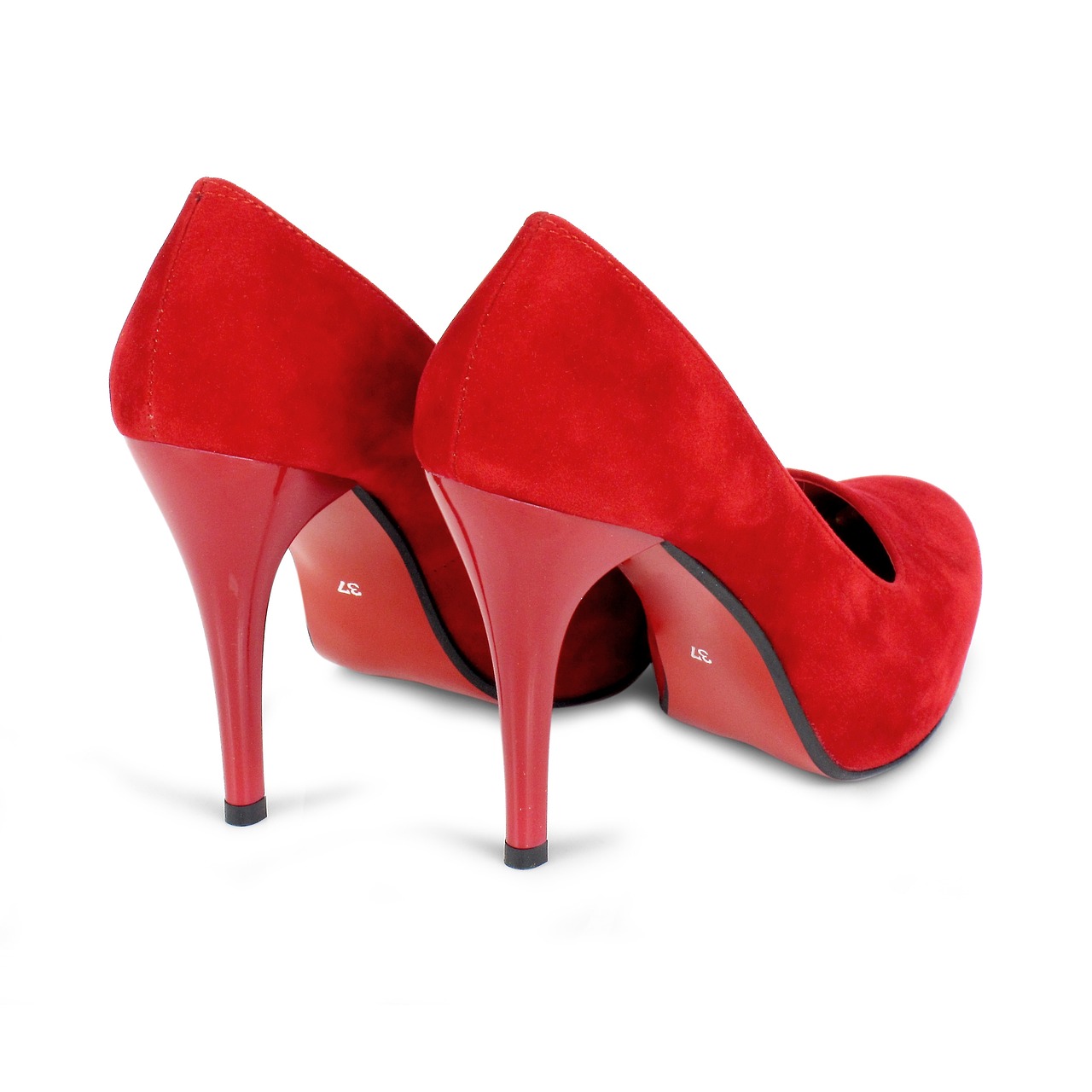
Community Donations
Engaging with your local community for donations can be a game-changer when it comes to sourcing unique materials for your upcycled fashion line. Imagine walking into a space where creativity meets generosity, and you’re greeted with an array of discarded clothing and textiles just waiting for a second chance at life. Not only do you get to create stunning pieces, but you also contribute to a cycle of sustainability and community support. So, how do you effectively reach out and build partnerships with local organizations?
First, it’s essential to identify potential partners in your community. Think about local charities, schools, or even community centers that may have items they’re willing to donate. You can approach them with a clear proposal outlining how their donations can help your fashion line while also benefiting the community. For instance, you might offer to host workshops or fashion shows that highlight the importance of sustainability. This way, you’re not just asking for donations; you’re offering something valuable in return.
Next, consider organizing a donation drive. This can be a fun and engaging way to rally your community around your cause. You could set up a collection point at a local event or even collaborate with a popular café or bookstore to gather items. Promote the event on social media to spread the word, and don’t forget to share your vision—let people know how their contributions will be transformed into fashionable pieces that tell a story.
Additionally, you could create a community rewards program. For every item donated, offer a discount on your products or a small token of appreciation. This not only encourages people to donate but also fosters a sense of community involvement and ownership. When individuals see their contributions making a tangible impact, they’re more likely to engage with your brand in the future.
Lastly, maintain an open line of communication with your donors. Share updates on how their contributions are being utilized and the impact it’s having on the environment and the community. This transparency builds trust and encourages ongoing support. Remember, every piece of clothing has a story, and by upcycling these materials, you’re not just creating fashion; you’re weaving a narrative that resonates with your audience.
In summary, community donations are a vital resource for your upcycled fashion line. By fostering relationships with local organizations, hosting donation drives, and engaging your community, you can source unique materials while promoting sustainability and creativity. So, roll up your sleeves, reach out, and watch as your fashion line flourishes with the help of your community!
- What types of clothing are best for upcycling? Look for items that have unique patterns, textures, or are made from high-quality fabrics. Vintage clothing often works well, as do items that can be easily altered.
- How can I promote my upcycled fashion line? Use social media platforms to showcase your designs, engage with your audience, and consider collaborations with influencers to broaden your reach.
- Are there any costs associated with sourcing community donations? While many donations may be free, consider potential costs for transportation or promotional materials for donation drives.

Creative Design Techniques
When it comes to designing a fashion line from upcycled clothing, creativity is your best friend. The beauty of upcycling lies in the ability to see potential where others see waste. By embracing innovative design techniques, you can transform discarded materials into stunning, one-of-a-kind pieces that tell a story. Imagine taking a worn-out denim jacket and turning it into a chic handbag or reimagining a vintage dress into a trendy crop top. The possibilities are endless!
One effective technique is to experiment with layering. Layering different fabrics not only adds depth to your designs but also allows you to mix and match textures and colors. For instance, consider combining a soft cotton with a sturdy canvas to create a unique and functional piece. This approach not only enhances the visual appeal but also contributes to the durability of the garment.
Another exciting method is patchwork. This technique involves sewing together various fabric scraps to create a cohesive design. It’s like putting together a puzzle, where each piece adds character and charm. You can use patches from old shirts, dresses, or even tablecloths to create a vibrant, eclectic look. Not only does patchwork celebrate the beauty of diversity in materials, but it also allows you to express your individual style.
Additionally, consider incorporating embellishments into your designs. Adding elements such as beads, buttons, or lace can elevate a simple upcycled piece into a statement garment. For example, a plain t-shirt can be transformed into a fashion-forward top with just a few carefully placed embellishments. This not only adds visual interest but also makes each item unique, as no two pieces will have the same arrangement of embellishments.
Moreover, don’t shy away from dying and printing techniques. Using natural dyes from plants or even coffee and tea can give your upcycled garments a fresh look while remaining eco-friendly. Fabric printing techniques, such as screen printing or block printing, can also be used to add custom designs to your pieces. This is a fantastic way to infuse your personality into your fashion line and create a signature style that stands out in the market.
Finally, remember that storytelling is a crucial part of your design process. Each piece of upcycled clothing has a history, and incorporating that narrative into your designs can create a deeper connection with your customers. Share the journey of your materials—from their original form to their new life as a fashionable item. This not only adds value to your creations but also resonates with consumers who are increasingly seeking sustainable and meaningful fashion choices.
- What is upcycling in fashion? Upcycling in fashion refers to the process of transforming old or discarded clothing and materials into new, stylish garments, thereby reducing waste and promoting sustainability.
- How can I find materials for upcycling? You can source materials for upcycling from local thrift stores, online marketplaces, and community donations. Each of these avenues offers unique opportunities to discover interesting fabrics and garments.
- What are some creative techniques for upcycling clothing? Creative techniques for upcycling include layering fabrics, patchwork, adding embellishments, and using natural dyes or printing methods to enhance your designs.
- How can I market my upcycled fashion line? Effective marketing strategies include establishing a strong social media presence, collaborating with other brands or influencers, and engaging with your community to build brand awareness.

Marketing Your Line
When it comes to launching your upcycled fashion line, having a solid marketing strategy is not just an option; it’s a necessity. Think of your marketing plan as the vibrant thread that weaves your brand into the fabric of the fashion world. It’s all about making your unique creations stand out in a crowded marketplace. So, how do you effectively promote your upcycled fashion line and attract the right audience? Let’s dive into some key strategies that will help you shine.
First and foremost, establishing a strong social media presence is crucial. Platforms like Instagram, Pinterest, and TikTok are visual-centric and perfect for showcasing your designs. Imagine your creations as pieces of art; you want to present them in a way that captures attention and sparks curiosity. Regularly posting high-quality images of your upcycled pieces, behind-the-scenes looks at your design process, and engaging stories about the materials you use can create a compelling narrative around your brand. This not only helps in building a community but also encourages potential customers to follow your journey.
Additionally, don't underestimate the power of hashtags. Using relevant hashtags can significantly increase your visibility. Consider hashtags like #UpcycledFashion, #SustainableStyle, and #EcoFriendlyFashion to connect with a broader audience who shares your values. Remember, social media is not just about selling; it’s about creating conversations. Engage with your followers by asking questions, responding to comments, and even hosting giveaways to foster a sense of community.
Another effective strategy is to explore collaborations and partnerships. Teaming up with other brands or influencers can exponentially enhance your reach. Imagine partnering with a local eco-friendly influencer who aligns with your brand ethos. They can help showcase your pieces to their audience, providing you with exposure that would take a long time to achieve on your own. Collaborations can take many forms, from co-hosting events to creating limited-edition pieces together. The key is to find partners who resonate with your brand and share a similar audience.
Moreover, consider hosting pop-up shops or participating in local markets. These events allow you to connect with potential customers face-to-face and provide an opportunity for them to experience your clothing firsthand. The tactile nature of fashion is essential; people want to feel the fabric, see the quality, and try on the pieces. Pop-up shops can create a sense of urgency and exclusivity, encouraging customers to make a purchase while they can. Plus, they provide a fantastic platform for storytelling—sharing the journey of your upcycled materials and the inspiration behind your designs.
Lastly, don’t forget about the power of email marketing. Building an email list allows you to communicate directly with your audience. Share updates about new collections, exclusive discounts, and the stories behind your designs. A well-crafted email can create a personal connection with your customers, making them feel like they are part of your brand’s journey. You can even include a section in your emails dedicated to sustainability tips or the importance of upcycling, further reinforcing your commitment to eco-friendly practices.
In summary, marketing your upcycled fashion line involves a combination of creativity, community engagement, and strategic partnerships. By leveraging social media, collaborating with like-minded individuals, hosting events, and utilizing email marketing, you can effectively promote your brand and make a significant impact in the fashion industry. Remember, every piece you create has a story to tell—so let that story shine through in your marketing efforts!
- What is upcycled fashion? Upcycled fashion involves transforming discarded materials into new clothing or accessories, promoting sustainability and reducing waste.
- How can I source materials for my upcycled fashion line? You can source materials from local thrift stores, online marketplaces, and community donations.
- Why is social media important for marketing my fashion line? Social media platforms allow you to showcase your designs, engage with your audience, and build a community around your brand.
- What are some effective ways to collaborate with others in the fashion industry? Look for brands or influencers who share your values and audience, and consider co-hosting events, creating limited-edition pieces, or promoting each other on social media.
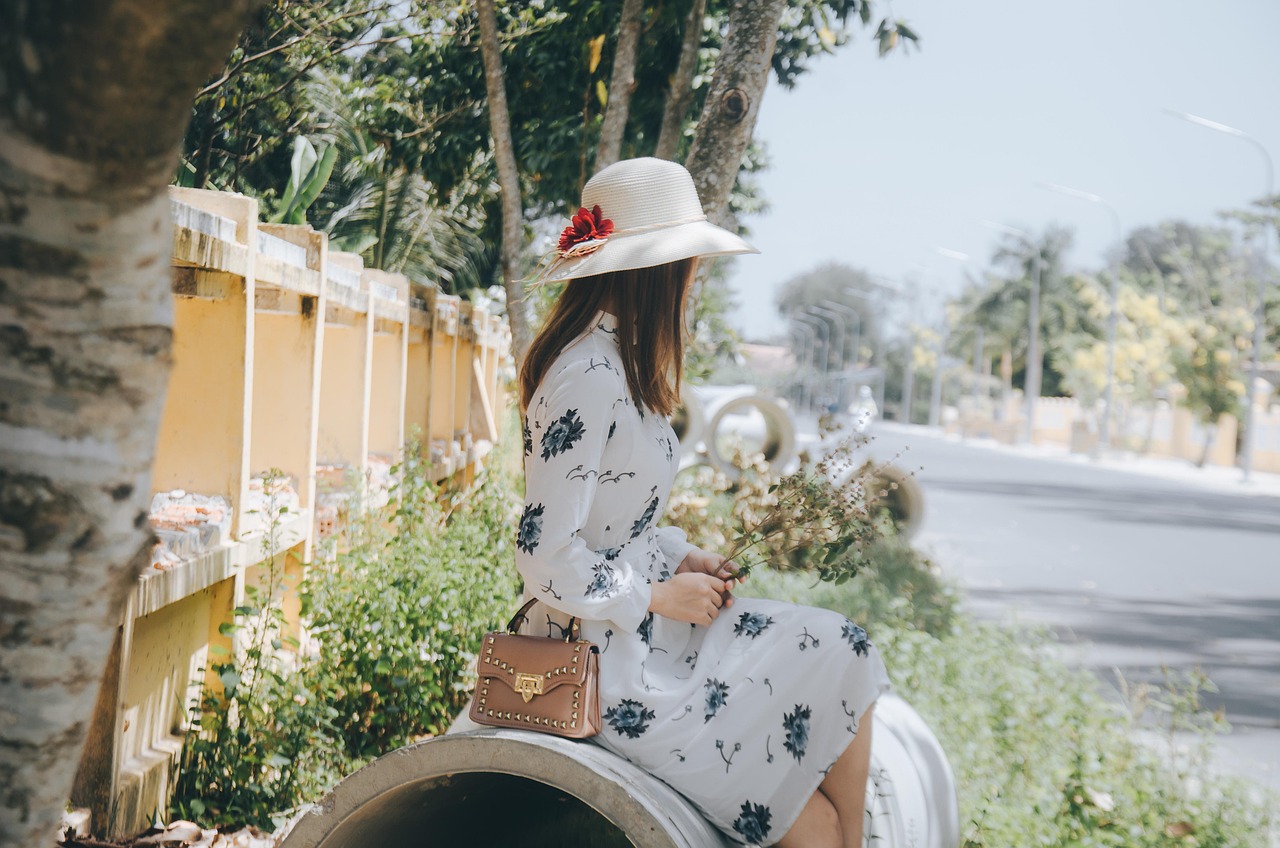
Social Media Presence
In today's digital age, having a strong is not just an option; it's a necessity for any fashion line, especially one that focuses on upcycled clothing. Think of social media as your virtual storefront—it's where you can showcase your creativity, connect with potential customers, and build a community around your brand. But how do you make the most of these platforms? Let’s dive into some strategies that can elevate your upcycled fashion line to new heights!
First and foremost, choose the right platforms. Not all social media channels are created equal, and each has its unique audience. For instance, Instagram is perfect for visual storytelling, allowing you to share stunning images of your designs, behind-the-scenes processes, and even before-and-after transformations of your upcycled pieces. On the other hand, Facebook can be great for building community and engaging with your audience through groups and events. Don't forget about Pinterest—it's a goldmine for fashion inspiration and can drive significant traffic to your website.
Next, consistency is key. Establish a posting schedule that keeps your audience engaged without overwhelming them. Aim for a mix of content types, including:
- Product showcases: Highlight your latest creations with high-quality images.
- Behind-the-scenes content: Share the process of transforming upcycled materials into fashionable items.
- Customer stories: Feature your customers wearing your designs, which adds authenticity and encourages others to share their experiences.
Engagement is another critical aspect. Respond to comments, ask questions, and create polls to foster interaction. This not only builds a loyal community but also gives you insights into what your audience loves. Remember, social media is a two-way street; the more you engage, the more your audience will feel valued and connected to your brand.
Finally, consider using hashtags strategically. Hashtags can significantly increase your visibility and help you reach a broader audience. Research popular hashtags related to upcycling, sustainable fashion, and your specific niche to ensure your posts are discoverable. For example, hashtags like #UpcycledFashion, #SustainableStyle, and #EcoChic can attract like-minded individuals who are passionate about sustainability.
In summary, a robust social media presence is essential for promoting your upcycled fashion line. By choosing the right platforms, maintaining consistency, engaging with your audience, and strategically using hashtags, you can create a vibrant online community that supports and celebrates your unique designs. So, get out there, show the world what you can do, and watch your brand flourish!
- What is upcycling in fashion? Upcycling in fashion refers to the process of transforming discarded clothing or materials into new, fashionable items, thereby reducing waste and promoting sustainability.
- How can I start my own upcycled fashion line? Begin by sourcing materials, designing your pieces, and then create an online presence to showcase and sell your work. Engaging with your community and using social media effectively can also help.
- What platforms are best for promoting an upcycled fashion line? Instagram and Pinterest are excellent for showcasing visual content, while Facebook is great for community building. Choose platforms that align with your target audience.
- How important is social media for a fashion brand? Social media is crucial for visibility, engagement, and building a loyal customer base. It allows brands to connect with their audience and showcase their unique offerings.
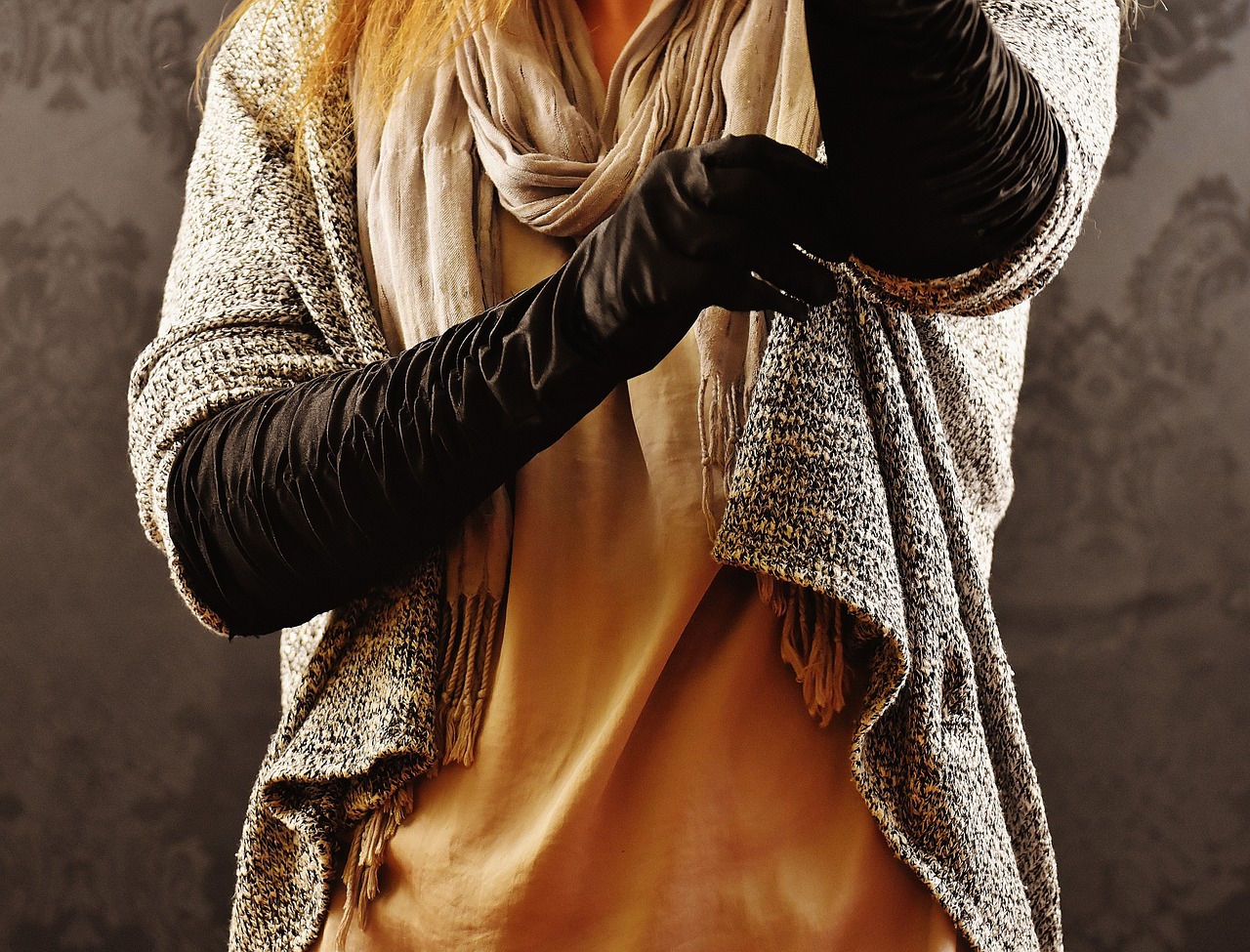
Collaborations and Partnerships
In the vibrant world of fashion, can be the secret ingredient that elevates your upcycled fashion line from ordinary to extraordinary. Imagine this: you’ve spent countless hours designing stunning pieces from discarded materials, but how do you get the word out? That’s where strategic collaborations come into play. By teaming up with other brands, influencers, or even local artists, you can tap into new audiences and amplify your message of sustainability.
One of the most effective ways to collaborate is by partnering with like-minded brands. When you join forces with a company that shares your values, such as a commitment to sustainability or ethical practices, you create a powerful narrative. For instance, consider a partnership with a local eco-friendly shoe brand. Together, you could launch a limited-edition collection that combines your upcycled clothing with their sustainable footwear. This not only broadens your reach but also enhances your credibility in the eco-fashion space.
Moreover, influencers can be game-changers for your marketing strategy. These individuals have the power to sway public opinion and can showcase your designs to their followers, who are often eager to support sustainable brands. When selecting influencers, look for those who resonate with your brand’s ethos. A fashion influencer who promotes eco-friendly living can authentically present your line, making their endorsement feel genuine rather than forced.
Another exciting avenue for collaboration is with local artists. Imagine hosting a pop-up shop where your upcycled clothing is displayed alongside unique artwork. This not only creates a visually stunning experience but also fosters a sense of community. You can even invite these artists to design exclusive prints for your clothing line, creating a unique fusion of art and fashion that resonates with customers.
To effectively manage these partnerships, consider the following strategies:
- Clear Communication: Establish open lines of communication from the start. Discuss goals, expectations, and timelines to ensure everyone is on the same page.
- Shared Values: Choose partners who align with your brand’s mission. This will create a more cohesive and authentic collaboration.
- Creative Freedom: Allow your partners to bring their unique flair to the table. This can lead to innovative ideas that you might not have considered on your own.
In addition to these strategies, it’s essential to promote your collaborations effectively. Utilize social media to share behind-the-scenes content, sneak peeks, and launch announcements. This not only builds excitement but also engages your audience, making them feel like a part of the journey.
Ultimately, collaborations and partnerships can open doors to new opportunities and help your upcycled fashion line flourish. By leveraging the strengths of others, you can create a brand that not only stands out but also makes a meaningful impact in the fashion industry.
Q1: How do I find potential collaborators for my upcycled fashion line?
A1: Start by researching brands and influencers that share similar values and aesthetics. Attend local fashion events, join online communities, and network with others in the sustainable fashion space.
Q2: What are the benefits of collaborating with influencers?
A2: Influencers can help you reach a broader audience, increase brand awareness, and build credibility. Their endorsements can lead to higher engagement and sales.
Q3: How can I ensure a successful collaboration?
A3: Clear communication, shared values, and creative freedom are key. Establish goals and expectations upfront, and be open to each other’s ideas.
Q4: Can collaborations help with sustainability?
A4: Absolutely! Collaborating with other sustainable brands or artists can amplify your message and promote eco-friendly practices, ultimately contributing to a more sustainable fashion industry.
Frequently Asked Questions
- What is upcycling in fashion?
Upcycling in fashion refers to the process of taking discarded materials and transforming them into new, fashionable items. It's all about creativity and sustainability, turning what might be considered waste into unique pieces that tell a story.
- How can I find materials for my upcycled fashion line?
There are several great sources for upcycled materials! You can explore local thrift stores, which often have a variety of unique fabrics and garments. Online marketplaces are another fantastic option, providing access to a wider range of items. Additionally, consider reaching out to your community for donations; local organizations might have materials they're willing to part with.
- What are some creative design techniques for upcycled clothing?
When it comes to designing with upcycled materials, think outside the box! Techniques like patchwork, dyeing, and combining different fabrics can create stunning results. Don't be afraid to experiment; the beauty of upcycling is in its imperfections and the stories behind each piece.
- How can I effectively market my upcycled fashion line?
Marketing your upcycled fashion line can be super fun! Start by building a strong social media presence to showcase your designs. Engage with your audience through posts and stories, and consider collaborations with other brands or influencers to expand your reach. Remember, authenticity and storytelling are key in connecting with potential customers.
- Why is sustainability important in the fashion industry?
Sustainability is crucial in the fashion industry because it helps reduce waste and minimizes the environmental impact of clothing production. By focusing on upcycled fashion, you contribute to a circular economy, where materials are reused rather than discarded, promoting a healthier planet for future generations.













